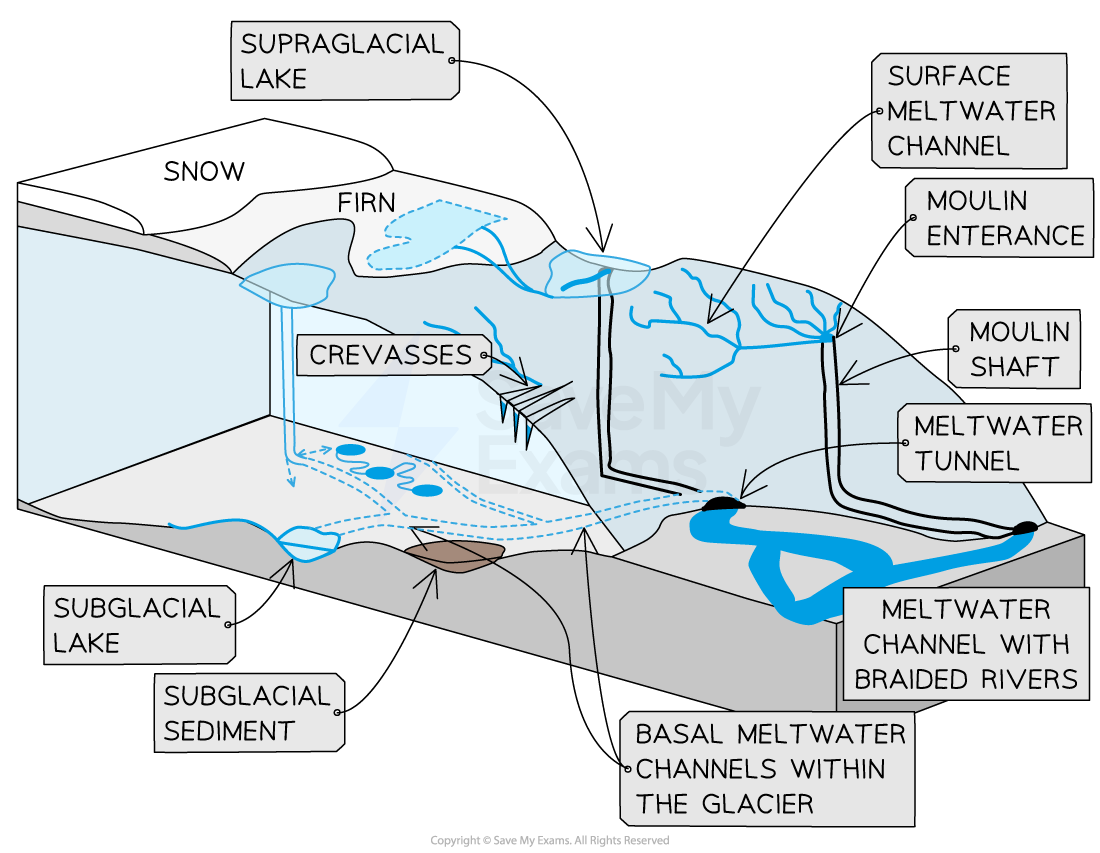Process of Water Movement
- Fluvioglacial landscapes are seen at the edges of warm-based and retreating glaciers, 'downstream' of the main glacier field
- The landscape is associated with flowing meltwater in temperate, peri/glacial regions
- Unlike polar regions, meltwater is seasonal, plentiful and freely flows from a tunnel at the base of the glacier's snout or across the surface of the glacier and into moulins or crevasses
- As such, a fluvioglacial landscape is considered very dynamic; as meltwater channels frequently change course

Fluvioglacial cross section
Note that surface meltwater descends through crack/crevasses and moulin shafts to the base of the glacier and exits through meltwater tunnels at the snout.
Meltwater
- Glacial meltwater is cold and loaded with suspended sediment
- Depending on the type of sediment, it can be milky, grey, or brown in colour
- Subglacial meltwater exits the snout of the glacier under hydrostatic pressure through meltwater tunnels
- These tunnels begin under the ice as meltwater caves and vary in size from 50-150m wide, ~20 m high and >14 km in length
Processes
- Fluvioglacial processes are through erosion and deposition by flowing meltwater
- Vast quantities of meltwater are produced, which transport large amounts of debris
- Processes include:
- Basal sliding where meltwater lubricates the warm-based glacier allowing it to flow more easily
- Nivation is essential in freeze-thaw and meltwater removes the debris, at the edges, during the summer melt
- Plucking - the meltwater refreezes and glues to rock fragments
- Abrasion - debris 'rubs' the bedrock and produces rock flour

Basal sliding through meltwater




